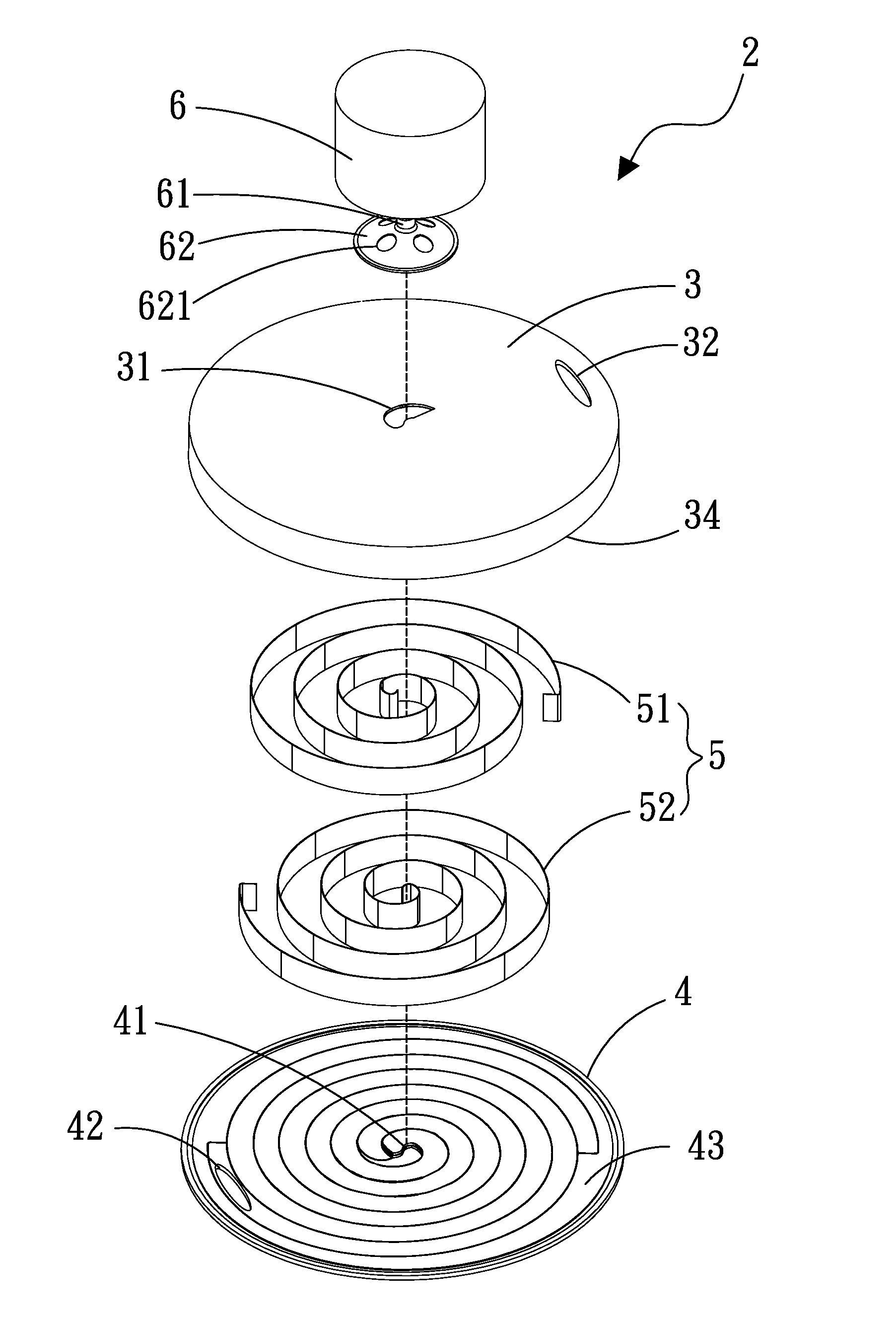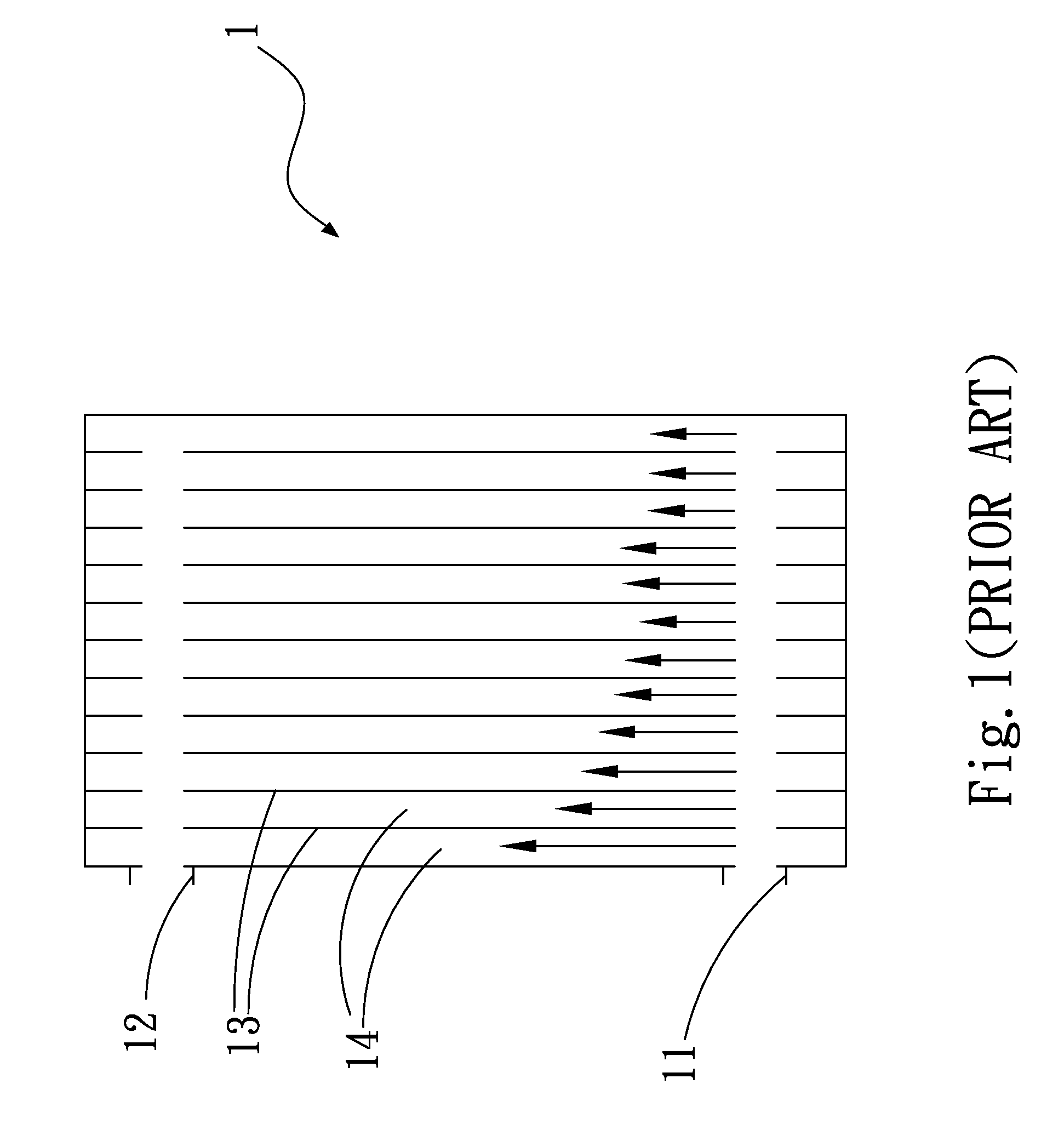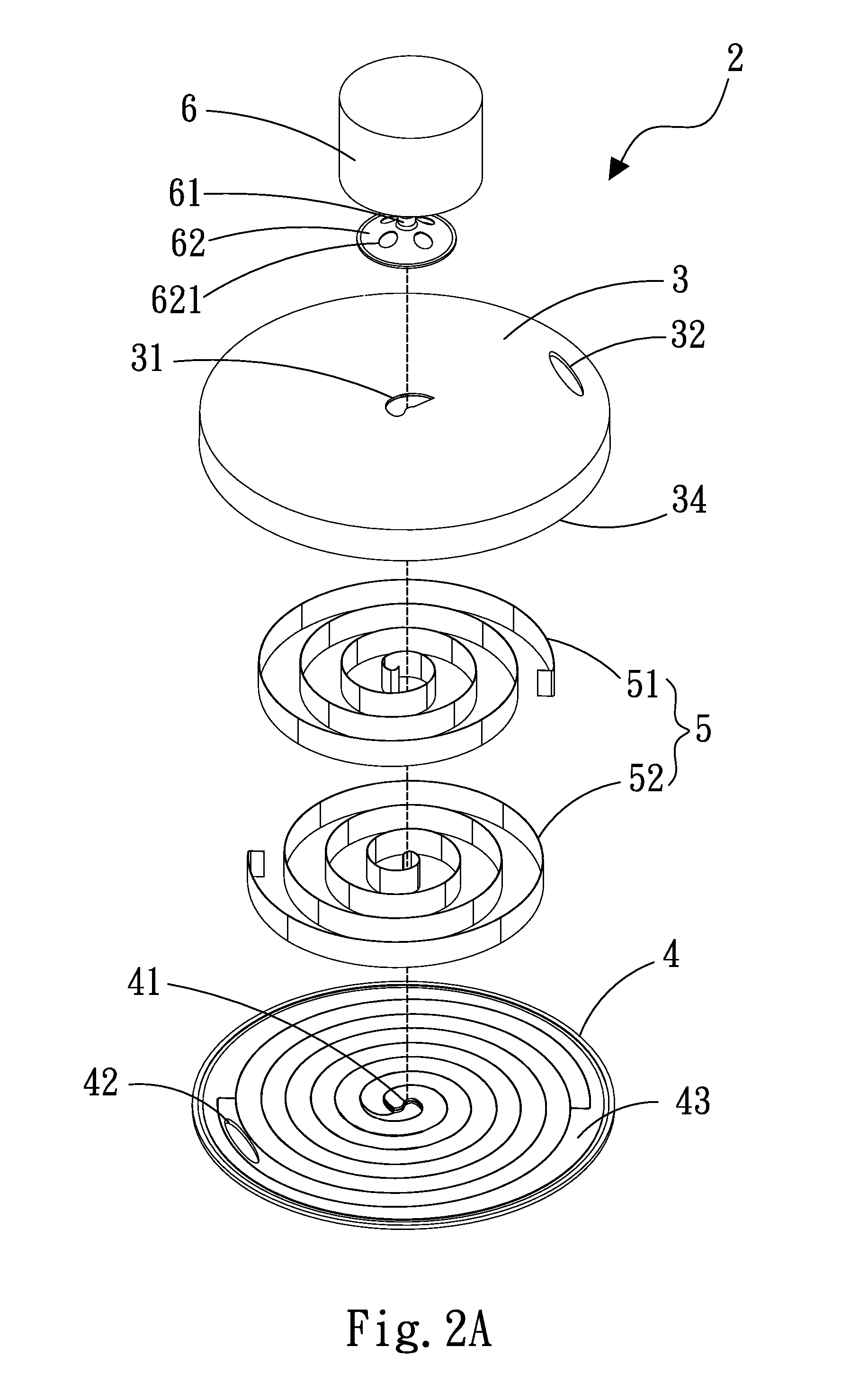Spiral heat exchanger
a heat exchanger and spiral technology, applied in the field of spiral heat exchangers, can solve the problems of overheating of electronic elements, constant increase of temperature between electronic devices and electronic elements, and high waste heat produced by electronic elements in these electronic devices, so as to increase heat exchange capacity, prolong heat exchange flow passages, and effectively upgrade the heat exchange efficiency of these effects
- Summary
- Abstract
- Description
- Claims
- Application Information
AI Technical Summary
Benefits of technology
Problems solved by technology
Method used
Image
Examples
Embodiment Construction
[0030]The present invention will now be described with some preferred embodiments thereof. For the purpose of easy to understand, elements that are the same in the preferred embodiments are denoted by the same reference numerals.
[0031]Please refer to FIGS. 2A, 2B to 5. A spiral heat exchanger 2 according to a first preferred embodiment of the present invention includes a first cover 3, a second cover 4, a spiral unit 5, and a driving unit 6. The first cover 3 is provided with at least one first inlet 31, at least one first outlet 32, and a first inner face 33. The first inlet 31 is a through hole arranged at a central area of the first cover 3, and the first outlet 32 is also a through hole arranged near an outer peripheral area of the first cover 3. The second cover 4 is assembled to the first cover 3 to define a chamber 34 in between the first and the second cover 3, 4. The second cover 4 is provided with at least one second inlet 41, at least one second outlet 42, and a second in...
PUM
 Login to View More
Login to View More Abstract
Description
Claims
Application Information
 Login to View More
Login to View More - R&D
- Intellectual Property
- Life Sciences
- Materials
- Tech Scout
- Unparalleled Data Quality
- Higher Quality Content
- 60% Fewer Hallucinations
Browse by: Latest US Patents, China's latest patents, Technical Efficacy Thesaurus, Application Domain, Technology Topic, Popular Technical Reports.
© 2025 PatSnap. All rights reserved.Legal|Privacy policy|Modern Slavery Act Transparency Statement|Sitemap|About US| Contact US: help@patsnap.com



